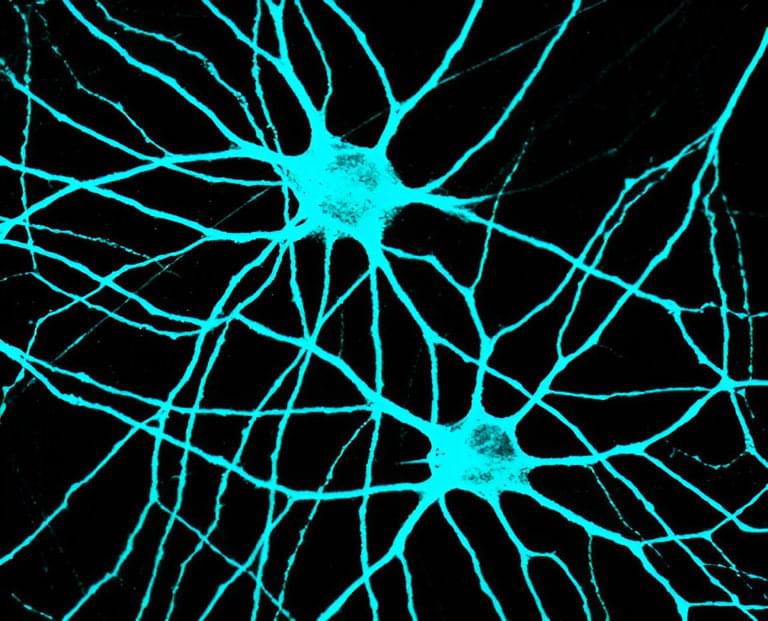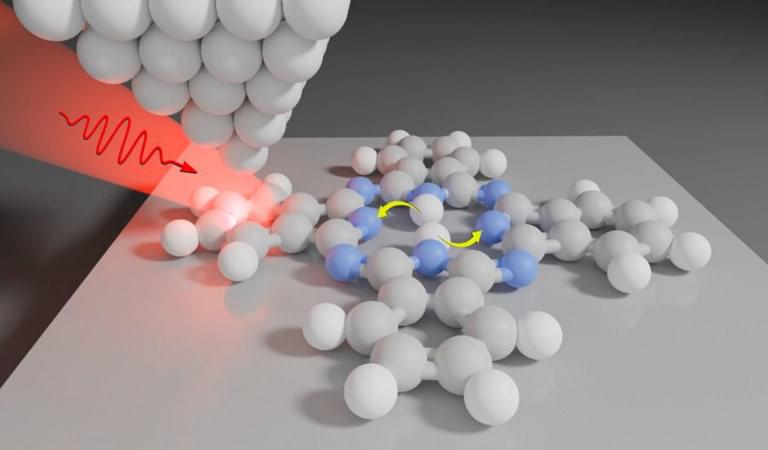Via Multitask Learning.
Ahmed A. Elhag, T. Konstantin Rusch, Francesco Di Giovanni, Michael Bronstein University of Oxford & MIT https://arxiv.org/abs/2410.
Can _equivariance_ be learned by unconstrained models?

Via Multitask Learning.
Ahmed A. Elhag, T. Konstantin Rusch, Francesco Di Giovanni, Michael Bronstein University of Oxford & MIT https://arxiv.org/abs/2410.
Can _equivariance_ be learned by unconstrained models?


Absorption of light initiates many natural and artificial chemical processes, for example, photosynthesis in plants, human vision, or even 3D printing. Until now, it seemed impossible to control a light-driven chemical reaction at the atomic scale, where only a specific part of one molecule is addressed.
Imagine a tiny, soft robot that could change the way medicine is delivered to targeted areas in the body.
A team of scientists at NTU has developed grain-sized soft robots that can be controlled using magnetic fields for targeted drug delivery, paving the way to possible improved therapies in future.
The new soft robot developed by engineers at NTU’s School of Mechanical and Aerospace Engineering (MAE) was reported in a paper published in the journal Advanced Materials.
The study is believed to be the first reported instance of miniature robots that can transport up to four different drugs and release them in reprogrammable orders and doses.

Virtual worlds, ChatGPT, and AI seem to be all the rage in 2024, with all sorts of developments shaking up not just the technology space, but having wider implications for medicine, politics, and even the judicial system. Now, researchers from Swiss startup FinalSpark have combined a virtual world with tiny human mini brains and built a two-way con…
Professor Michael Levin explores the revolutionary concept of diverse intelligence, demonstrating how cognitive capabilities extend far beyond traditional brain-based intelligence. Drawing from his groundbreaking research, he explains how even simple biological systems like gene regulatory networks exhibit learning, memory, and problem-solving abilities. Levin introduces key concepts like “cognitive light cones” — the scope of goals a system can pursue — and shows how these ideas are transforming our approach to cancer treatment and biological engineering.
Brush up on your physics knowledge with Brilliant! First 30 days are free and 20% off the annual premium subscription when you use our link ➜ https://brilliant.org/sabine.
Mathematician and Computer Scientist Stephen Wolfram wants to do no less than revolutionising physics. He wants to do it with computer code that gives rise to all the fundamental laws of nature that we know and like — and maybe more. Unfortunately, Einstein’s theories of general relativity inherently clash with how computers work. And yet, he and his team might have found a clever way around this problem.
🤓 Check out my new quiz app ➜ http://quizwithit.com/
💌 Support me on Donorbox ➜ https://donorbox.org/swtg.
📝 Transcripts and written news on Substack ➜ https://sciencewtg.substack.com/
👉 Transcript with links to references on Patreon ➜ / sabine.
📩 Free weekly science newsletter ➜ https://sabinehossenfelder.com/newsle…
👂 Audio only podcast ➜ https://open.spotify.com/show/0MkNfXl…
🔗 Join this channel to get access to perks ➜
/ @sabinehossenfelder.
🖼️ On instagram ➜ / sciencewtg.
#science #physics

1GITEX Global 2024 and IROS 2024 became true gateways to the future of technology, bringing together the most advanced innovations in artificial intelligence, robotics, and transportation under one roof. At the forefront of GITEX was the unique Nissan Hyperforce concept, an electric vehicle with an incredible 1,360 horsepower, capable of accelerating from 0 to 100 km/h in just 2 seconds. This electric supercar not only stunned with its speed but also with its futuristic design, reminiscent of the iconic Batmobile. With its advanced driving modes, R and GT, drivers can switch between a sporty and comfortable driving experience.
👉For business inquiries: [email protected].
✅ Instagram: / pro_robots.
0:00 Exhibitions in the United Arab Emirates.
0:34 GITEX GLOBAL 2024
0:47 Nissan Hyper Force supercar.
1:43 Italdesign’s Quintessenza concept car.
2:39 Ameca robot.
3:15 Robot bartender.
3:38 Airscooter by Zapata.
4:13 Autonomous Patrol of the Future by Dubai Police.
5:09 Tesla Cybertruck.
6:01 All-terrain delivery vehicles from Mobinn.
6:20 Cadillac Electric Flyer.
7:03 Drones by Multi Level Group.
7:32 Xpeng Aeroht Flying Car.
8:18 New humanoid robot Kepler.
8:42 ZainTECH Drones.
9:04 Robo-charging electric cars.
9:43 Odigo robot with AI
10:26 IROS 2024
11:02 Obstacle course for four-legged robots.
11:41 Robofootball on IROS 2024
12:32 High Torque Robotics.
13:03 Unitree robots.
13:39 Nimble Direct Drive Robots.
14:16 Elephant Robotics.
14:47 Humanoid robots on display.
15:14 DexNex teleoperated system.
15:47 Hubot robot.
In addition, GITEX 2024 showcased the latest flying car concepts. Among them was a model capable of unfolding its blades and taking off in just two minutes, making it the perfect vehicle for fast, seamless travel both on the road and in the sky. The exhibition also featured other cutting-edge innovations, such as autonomous patrol cars equipped with drones and robotic bartenders that serve drinks without lines or fuss.
IROS 2024, held in Abu Dhabi, was equally impressive, giving a glimpse into the future of robotics. Highlights included thrilling competitions between robot dogs and humanoid robots, as well as demonstrations of new robots capable of running, jumping, and even performing complex acrobatic tricks. Autonomous robots designed for patrolling and delivery, capable of navigating routes and recognizing objects in the toughest conditions, also drew significant attention.
Both exhibitions revealed how robotics and AI are increasingly influencing our everyday lives, offering solutions for safety, transportation, and even entertainment. Unique projects, such as autonomous drones for agriculture and firefighting, and robotic systems for smart cities, are already reshaping urban spaces. With the technologies presented at GITEX and IROS, the future is closer than ever. Subscribe to our channel to stay updated on the latest innovations and events in the world of high-tech.
Soon humanity may reach out to the galaxy and spread ourselves to every world in it, but in the billions and billions of years to come on those billions and billions of worlds, humanity shall surely diverge down many roads and posthuman pathways.
Watch my exclusive video Caretaker AI \& Genus Loci: https://nebula.tv/videos/isaacarthur–… Get Nebula using my link for 40% off an annual subscription: https://go.nebula.tv/isaacarthur.
Get a Lifetime Membership to Nebula for only $300: https://go.nebula.tv/lifetime?ref=isa… Use the link gift.nebula.tv/isaacarthur to give a year of Nebula to a friend for just $30.
Visit our Website: http://www.isaacarthur.net.
Join Nebula: https://go.nebula.tv/isaacarthur.
Support us on Patreon: / isaacarthur.
Support us on Subscribestar: https://www.subscribestar.com/isaac-a…
Facebook Group: / 1583992725237264
Reddit: / isaacarthur.
Twitter: / isaac_a_arthur on Twitter and RT our future content.
SFIA Discord Server: / discord.
Credits:
Posthuman Pathways.
Episode 470; October 24, 2024
Editor: Tim Lusko.
Produced, Narrated \& Written: Isaac Arthur.
Graphics:
Jeremy Jozwik.
Ken York YD Visual.
Udo Schroeter.
Select imagery/video supplied by Getty Images.
Music Courtesy of Epidemic Sound http://epidemicsound.com/creator